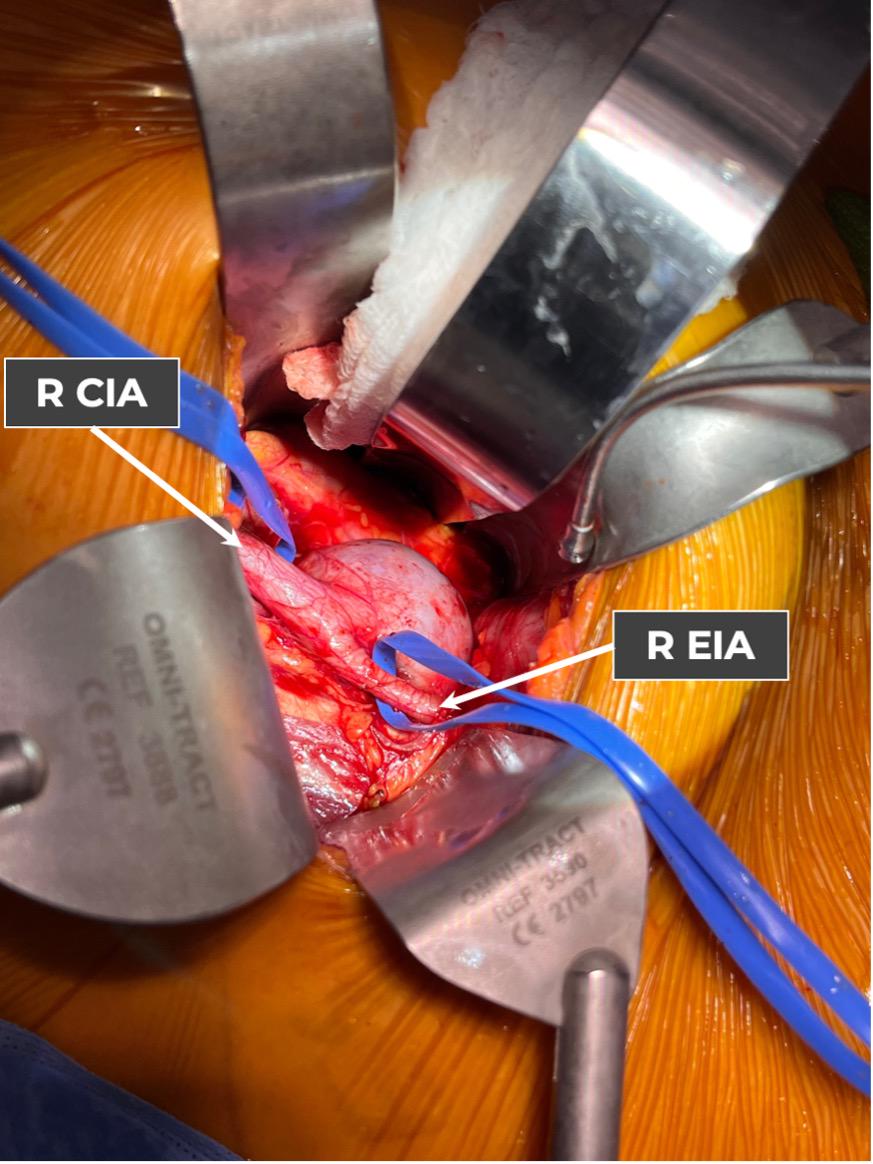DEMOGRAPHICS:This patient is a 40-year-old healthy female with a past medical history of appendicitis and open appendectomy. She had no familial history of connective tissue disorders or aneurysmal disease.
HISTORY:The patient presented to an outside hospital due to pelvic pain, for which a CT of the abdomen and pelvis was performed. This CT demonstrated a 4.8 cm x 3.7 cm right internal iliac artery aneurysm.
PLAN:Given the patientís young age, small arterial diameters, and ability to preserve flow to the hypogastric artery, we opted to perform an open repair in this patient. An 8 cm oblique incision was made across the obliques and lateral border of the rectus and the right internal iliac was exposed using a retroperitoneal approach. A right common iliac artery to internal iliac artery bypass was performed using 8 mm rifampin-soaked Dacron. The patient had an uneventful recovery and was discharged on post-operative day 5. Genetic testing revealed Loeys-Dietz syndrome.
DISCUSSION:
We report a successful case of open internal iliac artery bypass for an aneurysm in a young female with Loeys-Dietz syndrome. Several alternative approaches were considered during her preoperative evaluation. The simplest approach wound have been excluding the aneurysm, either with coiling or covered stenting of the common iliac artery. However, this approach would have a risk of buttock claudication. Alternatively, an iliac branch endoprosthesis could be utilized. Though in this patient this technique would have been challenging due to the small diameter of her common iliac artery. Ultimately, we felt the open approach would give her the most durable option while still allowing for perfusion of the internal iliac artery. Additionally, the concern of a possible underlying tissue disorder was another consideration in our selection of open repair. 